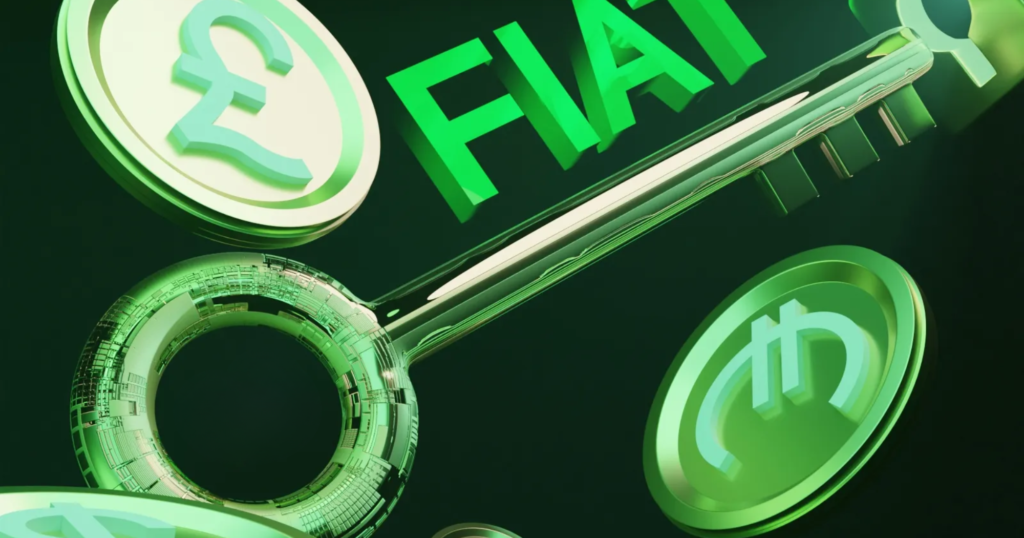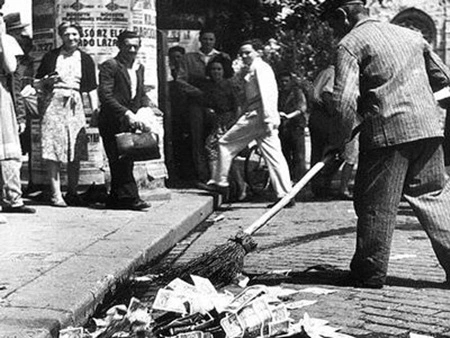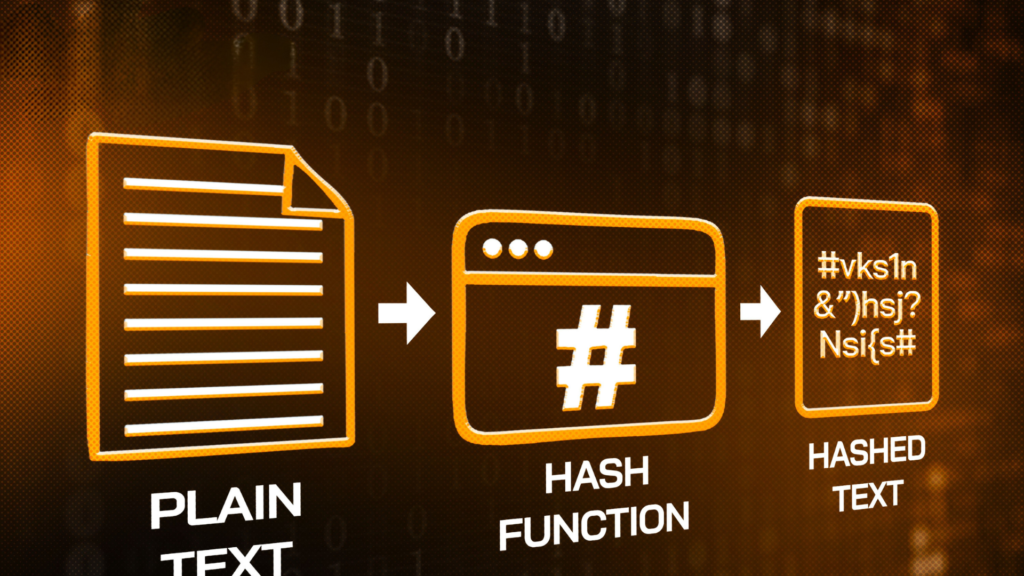Currency in general, and fiat currency in particular, is an indispensable part of the traditional economy. But what about in the crypto world? What role does fiat currency play, and is there any relationship between fiat currency and cryptocurrency?

What is Fiat Currency?
Fiat currency, also known as nominal currency, is a type of currency issued and legally recognized by the government of a country. Fiat currency has no intrinsic value but is determined by the authority of the government.

The value of fiat currency originates from the relationship between supply and demand and the stability of the issuing government. Today, fiat currency is used daily for trade, buying and selling goods and services, investment, and savings within the issuing country. With its many benefits, fiat currency has completely replaced the gold standard and commodity money systems.
Some types of Fiat currency of various countries
Due to the basic characteristic of being issued by the governments of various countries, each country will have its own regulations and classifications regarding its fiat currency:
- Fiat currency in Vietnam: The Vietnamese Dong (VND) is the legal tender of Vietnam. Currently, both paper money and polymer money are used in parallel as unlimited means of payment throughout the territory.
- Fiat currency in the United States: The U.S. dollar (USD) is the legal tender of the United States. The USD is issued in parallel in two forms: coins and banknotes.
- Fiat currency in the United Kingdom: The Pound Sterling (GBP) is the legal tender of the United Kingdom of Great Britain and Northern Ireland and its overseas territories and colonies. This currency is also issued in parallel in two forms: coins and banknotes.
Some other well-known fiat currencies: Euro (the common currency of Europe), Yuan (China), Franc (Switzerland), Yen (Japan)…
Where can Fiat currency be used?
Currently, the fiat currency system has been accepted and widely used throughout the world and can be used for the purpose of buying and selling almost all types of goods and services.
Most countries in the world have their own fiat currency systems. An individual can also convert between different fiat currencies when on vacation, traveling, or sending money around the world.
History of the Development of Fiat Currency
According to historians, fiat currency has been around for quite some time. It is determined that China was the first place where fiat currency appeared, in the 11th century. At that time, China had a shortage of coins for trading goods, and people had to use paper notes with denominations written on them and managed by the government (the imperial court at that time) as a substitute.
Later, during the Yuan Dynasty of Kublai Khan, a paper money system was officially established (called Chao).
After that, this type of currency gradually spread to other countries. In the 17th century, fiat currency was adopted by Spain, Sweden, and the Netherlands. In the 18th and 19th centuries, New France in Canada, the American colonies, and the US federal government also experimented with the use of fiat currency.
By 1972, under President Nixon, the United States completely abandoned the gold standard (the gold standard system allowed the conversion of paper money into gold) and switched to the fiat currency system. This was also the impetus for the use of fiat currency in the global economy and finance. Fiat currency began to dominate in the 20th century.
How Fiat Currency Works
Essentially, fiat currency is not dependent on commodities; its value is based on the trust relationship between the entities that are the issuers, the owners, and the people who accept to use them. If the trust in the value of the currency is lost, the demand will also be lost, leading to a decrease in value.
Currency is a measure of the value of goods, and also the crystallization of value (GDP) in the currency of that country. This means that the value of the currency represents the productive capacity of a country. When the productive capacity of a country increases, the exchange value of that country’s fiat currency increases, and vice versa.
The government is the sole unit authorized to print fiat money. Therefore, the government has the right to control the monetary system and introduce monetary policies (easing, tightening) or apply related tools when major financial events and crises occur to ensure the financial stability of that country.

The process of managing the money supply by the Central Bank (CB) aims at a desired interest rate to achieve economic stability and growth. Monetary policy can be divided into two types: expansionary policy and contractionary policy.
- Expansionary monetary policy: This is a policy where the CB buys government bonds or other securities in the market, lowers interest rates, reduces the reserve requirement ratio → Increases money supply & stimulates economic growth.
- Contractionary monetary policy: In contrast to expansionary policy, with a contractionary monetary policy, the CB will sell government bonds or other types of securities, raise interest rates, increase the reserve requirement ratio → Reduces money supply, curbs inflation and bubbles.
If a country makes wrong decisions about monetary policies, the fiat currency of that country risks losing value due to inflation or even becoming worthless in the case of hyperinflation. If people lose faith in a country’s currency, the money will no longer hold value.
Examples of this are the events that occurred in Zimbabwe (2000 – 2009), Bolivia (1984 – 1985), Hungary (1945 – 1946)…

Characteristics of Fiat Currency
Advantages
It is no coincidence that fiat currency was used to replace the gold standard. Fiat currency has the following advantages:
- Flexibility: Fiat money gives governments and central banks the flexibility to address issues related to economic crises. Issuing fiat money is also a source of revenue for the government.
- Production cost: Creating fiat money is more affordable than commodity-based money.
- Eliminates scarcity: Because fiat money is not a scarce or fixed resource like gold or diamonds, central banks can control its supply, thereby managing other economic variables.
- Convenience: Fiat money does not depend on commodity reserves. It also does not require storage, protection, monitoring, and other costly requirements.
- Globality: Fiat money is used in countries around the world, making it an accepted currency for international trade.
Disadvantages
However, fiat currency is not without its disadvantages:
- No intrinsic value: Fiat money has no intrinsic value. This means that the government creates money based solely on its credibility, which can lead to currency instability, inflation, and the collapse of the economic system.
- Inflation risk: The government has full control over supply and demand, so if the government excessively increases the supply, it will lead to increased inflation and an economic crisis.
History has witnessed the collapse of economies in many countries due to the printing of more money in the context of inflation, where people lost faith in the stability of the government. This is also the basis for concerns about potential consequences in the future.
Fiat and Crypto
For ease of understanding, let’s explore and compare the similarities and differences between fiat currency and Bitcoin – the first cryptocurrency to be recognized as legal tender by a country (El Salvador, Venezuela).
Similarities: Both are not backed by any commodity. In addition, they were both created for the purpose of developing the global financial economy.
Differences:
Some notable differences are that fiat currency is centrally managed by the government, and the total supply can be unlimited. On the other hand, cryptocurrency operates in a decentralized manner, with the supply mostly limited (BTC), and all transaction information is recorded and managed on a decentralized ledger, called the blockchain.
As a form of digital currency, cryptocurrency has no physical characteristics and is borderless, making it less subject to physical limitations when transacting worldwide. Tracing cryptocurrency transactions is also more difficult, and related activities are all anonymous.

How to Use Fiat to Buy Crypto?
Currently, users can conduct transactions to buy and sell crypto with fiat currency through peer-to-peer (P2P) trading platforms or leading global exchanges to ensure security (Binance, Remitano, etc.). There are also a few other methods such as using Visa cards or over-the-counter (OTC) trading.
Note: Investing in and buying and selling digital assets (coins, tokens) are currently not legally recognized and protected in some countries. Users should carefully review the regulations of their country to avoid legal issues.
See more: Guide to buying coins with a credit card.
The Relationship Between Crypto and Fiat?
It can be seen that fiat money is issued and controlled by the government and the central bank, and this type of currency is closely linked to the trust and power of the government. Therefore, the existence of the government will always go hand in hand with fiat currencies. The government ensures the stability of fiat currency. Moreover, this type of currency has been around for a long time and is widely accepted worldwide. Therefore, this type of currency will be difficult to replace completely.
In reality, at present, crypto is coexisting with fiat currency, complementing each other in the circulation process. Users often buy crypto for speculation or investment for profit, then convert from crypto to fiat currency to purchase goods.
Currently, many people still consider crypto as an investment channel rather than a new form of currency. Therefore, at this time, it is very difficult for fiat currency to be completely replaced. However, the story in the future may be completely different. History shows the vulnerability of fiat currency, while crypto has only emerged in the last decade or so and has a very long way to go.
The future is unpredictable. It is very likely that Bitcoin or other cryptocurrencies will not be able to replace the fiat currency system, however, they will open up a new financial system with great potential. Some countries have also seen the advantages and disadvantages of these two types of currencies to research a new form – fiat digital currency.
Central Bank Digital Currency (CBDC) is also fiat currency in digital form, issued, controlled, and secured by the central bank of a country or sovereign territory.
CBDC was created to digitize cash; provide a feasible method to control the digital economy; improve the efficiency of monetary policy management, and promote economic growth. Fiat digital currency has an exchange value equal to 1-1 with regular fiat paper money.
→ The research and development of digital currency are very important. Major countries around the world are spending a lot of time and effort to develop CBDC. Although research and development are expensive and lengthy, they can bring many strengths to the currency of that country.
Read more: What is CBDC? A Generational Opportunity for the Crypto Market.
Conclusion
Fiat currency has a long history and has an absolute standing, coexisting with the governments of countries. At present, fiat currency and crypto are supporting each other. Crypto replacing fiat currency will not happen in the near future. Major countries around the world are researching to combine these two types of currencies.
It is possible that in the future, when countries complete the testing of fiat digital currencies, there will be major changes in the global currency landscape, which also shows that the cryptocurrency market is increasingly receiving attention and recognition.
Read more: If you need a product to assist with tax issues and portfolio management in crypto, check out CoinLedger

